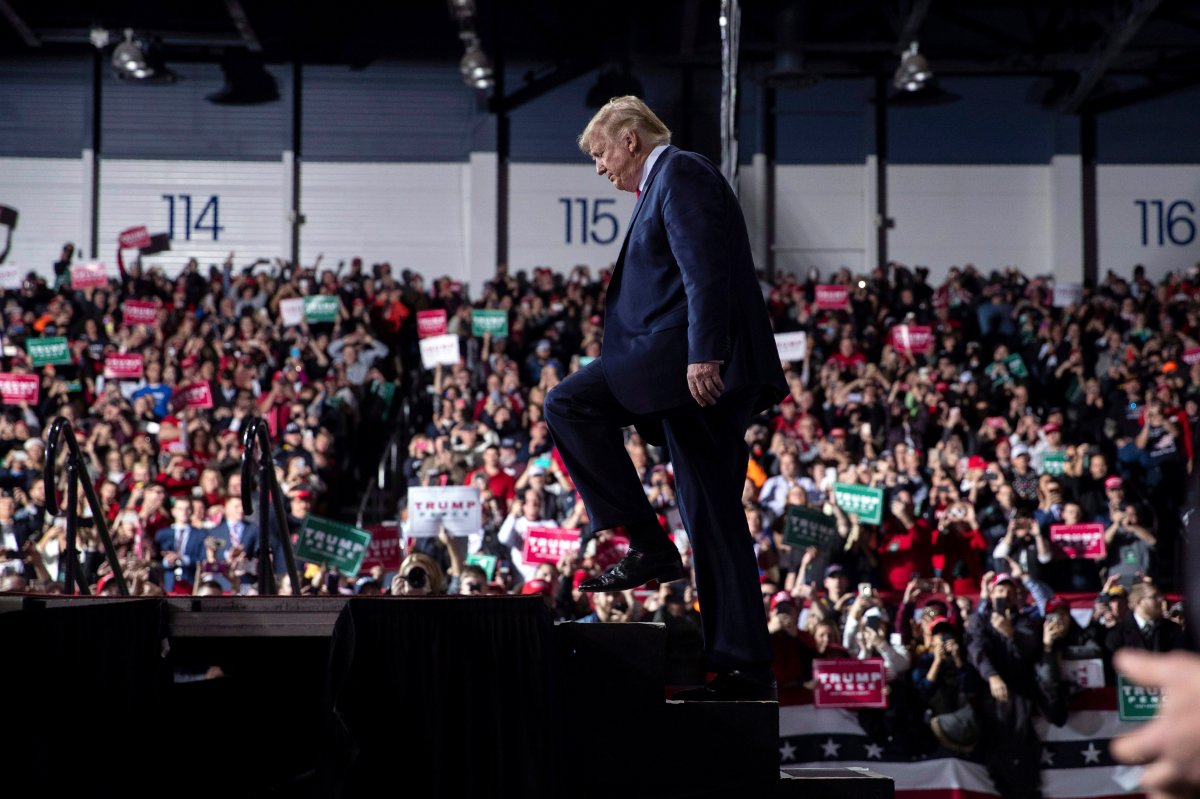He who lives by the crystal ball will develop a taste for ground glass, read a warning on a coaster at a Montreal tavern read years ago — the beer parlour version of the fortune cookie.

Today, as I carry forward the increasingly outdated annual habit of thumb-tacking a new paper calendar to my desk, I simultaneously scrawl predictions for 2020 on sticky notes affixed to the corresponding calendar page.
Since I tend to keep calendars for a few years, reviewing those notes can be entertaining.
So, with the war for the hearts and minds of America’s voters about to hit overdrive on the road to the Nov. 3, 2020 vote, and with the Iowa caucuses a mere six weeks away, here are some calendar notes from the last time around — all the way back in 2016.
Scribbled beside Jan. 11, 2016: “Donald Trump will be elected president on November 8.”
I can’t recall specifically why I made that prediction on air at that time, but I do recall it was met with skepticism and even ridicule — at least initially.
Flip the page. A note marked Feb. 21 reads, “Jeb Bush out. Dolt 45.”
“Dolt 45” had been a New York newspaper headline a few days earlier and was published on the heels of a clunker official Bush campaign tweet, featuring a picture of a handgun bearing the candidate’s name.
Donald Trump’s wildly unconventional approach toward his rivals for the Republican Party nomination had claimed a major victim.
Florida senator Marco Rubio, infamously dubbed “little Marco,” was out by mid-March.
And they retreated. One by one, Donald Trump’s GOP opponents tapped out.

Fast-forward to Sept. 9, 2016, when a calendar sticky note reads, “Clinton hands it to Trump at fundraiser. Deplorables.”
After the high of being confirmed the Democratic nominee at the party’s convention in July, following a bruising battle with Sen. Bernie Sanders from tiny Vermont, Hillary Clinton would stumble — and badly so — at the September fundraising event, speaking words which doubtlessly haunt her still.

Get breaking National news
“You know, to just be grossly generalistic, you could put half of Trump’s supporters into what I call the basket of deplorables,” she said. “Right?”
Nothing of the remainder of that speech stuck. Headlines roared, “Deplorables,” and the Trump campaign went ballistic.
The next day, Clinton attempted a makeover. “Last night I was ‘grossly generalistic’ and that’s never a good idea. I regret saying half — that was wrong.”
It sure was.
The retraction? Too little, too late, and too weak.
A sticky note for Sept. 21 reads, “Clinton asks why aren’t I 50 points ahead?”
The Washington Post replied. “This is why Hillary Clinton isn’t 50 points ahead, or even 10 points ahead,” the headline for the Post story read, confirming Clinton and Trump were virtually tied in U.S. national polling.
Other calendar notes detailed how Sanders and then-FBI director James Comey rocked the Clinton campaign and how the Democratic Party impaled itself with ethically-challenged behaviour toward Sanders.

Meanwhile, Trump, whose performances were often more theatre than substance, largely survived the scandals his opposites predicted would be Trump’s absolute undoing, and which likely would have been in most other elections.
A sticky note from Nov. 8 reads, “Dems confident, polls say Clinton. I don’t think so.”
Then, a sticky note marked Nov. 9 reads, “Clinton and Dems lost toss up states and contact with expected base, working class voters. Trump defeats Dems terrible choice as nominee.”
And so it was.
In the waning days of 2019, the warring carries on as Trump, now president, faces an impeachment trial in the United States Senate — a trial he’s expected to survive along party lines.
There’s one more item I’d like to share, and that’s the Democratic Party’s immediate response to the very first announcement made by Donald Trump, declaring that he was seeking the GOP presidential nomination.
On June 16, 2015, the Democrats issued the following news release, as reported by CNBC:
“Today, Donald Trump became the second major Republican candidate to announce for president in two days. He adds some much-needed seriousness that has previously been lacking from the GOP field, and we look forward to hearing more about his ideas for the nation.”
The road to the White House over the next 11 months will feature raucous political battles in a deeply-divided America. Accusation and scandal will pepper the 2020 election trail. Each side will assault the other with vitriol and bile.
Roy Green is the host of the Roy Green Show on the Global News Radio network.
Listen to the latest from the Roy Green Show
Subscribe to the Roy Green Show Podcast now at Apple Podcast or Google Play.












Comments